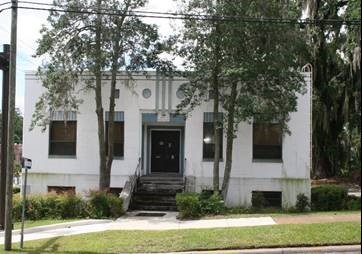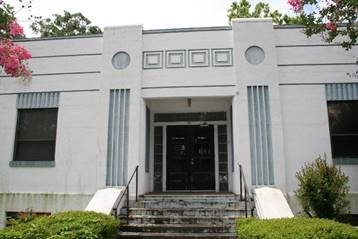
For Immediate Release
Monday, February 26, 2018
Contact: Contact: Mark Ard
850.245.6529
[email protected]
Secretary Detzner Announces the Designation of Two Tallahassee Properties on the National Register of Historic Places
TALLAHASSEE, FLA –
Secretary of State Ken Detzner announced today that the Leon County Health Unit Building and the WPA Building, both located in downtown Tallahassee, have been listed on the National Park Service’s National Register of Historic Places.
“The successful listing of these two buildings on the National Register demonstrates the lasting impact such places can have upon their communities. Actions taking place in the Leon County Health Unit and the WPA Building had a profound effect that spanned generations,” said Secretary Detzner. “These properties are the best two remaining examples of Art Moderne style architecture in Tallahassee.”
The Leon County Health Unit Building, completed in 1940, was the first purpose-built local health unit in the state of Florida and marked a significant milestone in the State Board of Health’s local health program. The Leon County Health Unit (which later became the Leon County Health Department) was unusual in a time of racial segregation for employing an interracial staff and being open to both black and white residents. The building is also associated with Dr. Leander Johnson Graves, the first director of the health unit who played a large role in the implementation of public health in Leon County. The health department vacated the building in 1965. From 1967 to 1971, the Florida Division of Child Training Schools (later renamed the Division of Youth Services) was based in the building, when a number of crucial advancements took place, including the implementation of group therapy techniques, the abolition of corporal punishment in juvenile facilities, and the integration of juvenile facilities in the state. The building is expected to be renovated later this year.

The Works Progress Administration (WPA) Building, completed in 1941, served as the regional administrative offices for the WPA until it was disbanded in 1943. A federal civic works program, the WPA constructed public projects such as roads, bridges, state parks, and schools around the nation, as part of President Franklin D. Roosevelt’s “New Deal” plan to employ millions of workers during the Great Depression. In Tallahassee, the WPA helped to construct institutions such as the Leon County Armory and the old Leon County Jail, and completed several building projects at the Florida State College for Women, today Florida State University. From 1950 to 1965, this WPA building housed the district offices and clinic for the Florida Crippled Children’s Commission (FCCC), created to help children with congenital abnormalities and orthopedic conditions, and marked a significant improvement in the care of children with special needs in the community. From 1951 to 1966, the building was also home to the Leon County’s first mental health clinic, staffed by the county and Florida State University, and also served as the headquarters for the Leon County Associated Charities (LCAC). Originally known as the Leon County Welfare Association, the LCAC functioned as the chief social welfare agency in the county, distributing aid to the poor, and serving as a principal referral authority for legal and health services. Later, the building was used as a Leon County Courthouse Annex. The building is slated for demolition later this year.

The Health Unit and the WPA Building sit side-by-side. The buildings are Art Moderne style architecture, a slightly later and streamlined version of Art Deco architecture. Both have simple flat roofs and stucco exteriors that are brought to life by architectural details including decorative horizontal and vertical lines, nautical porthole motifs, rounded corners, decorative window lintels, and the use of glass block still present at the front doors of the WPA building. At the time they were built, the buildings were state-of-the-art facilities. The horizontal and vertical lines in their construction are intended to evoke a sense of speed and modernity, but the reduced ornamentation is also a reflection of austere economic years and institutional buildings.
###
About The National Register of Historic Places
The National Register of Historic Places is a list maintained by the National Park Service which includes historical or archaeological properties including buildings, structures, sites, objects, and districts, that are considered worthy of preservation because of their local, statewide and/or national significance. Nominations for properties in Florida are submitted to the National Park Service through the Florida Department of State’s Division of Historical Resources. Florida has over 1,700 listings on the National Register, including 292 historic districts and 174 archaeological sites. There are more than 50,000 sites contributing to the National Register in Florida. For more information, visit flheritage.com/preservation/national-register. For more information about the National Register of Historic Places program administered by the National Park Service, visit nps.gov/nr.
About The Florida Department of State’s Bureau of Historic Preservation
The Bureau of Historic Preservation (BHP) conducts historic preservation programs aimed at identifying, evaluating, preserving and interpreting the historic and cultural resources of the state. The Bureau manages the Florida Main Street Program, and under federal and state laws, oversees the National Register of Historic Places program for Florida, maintains an inventory of the state's historical resources in the Florida Master Site File, assists applicants in federal tax benefit and local government ad valorem tax relief programs for historic buildings, and reviews the impact that development projects may have on significant historic resources. For more information, visit flheritage.com/preservation.

